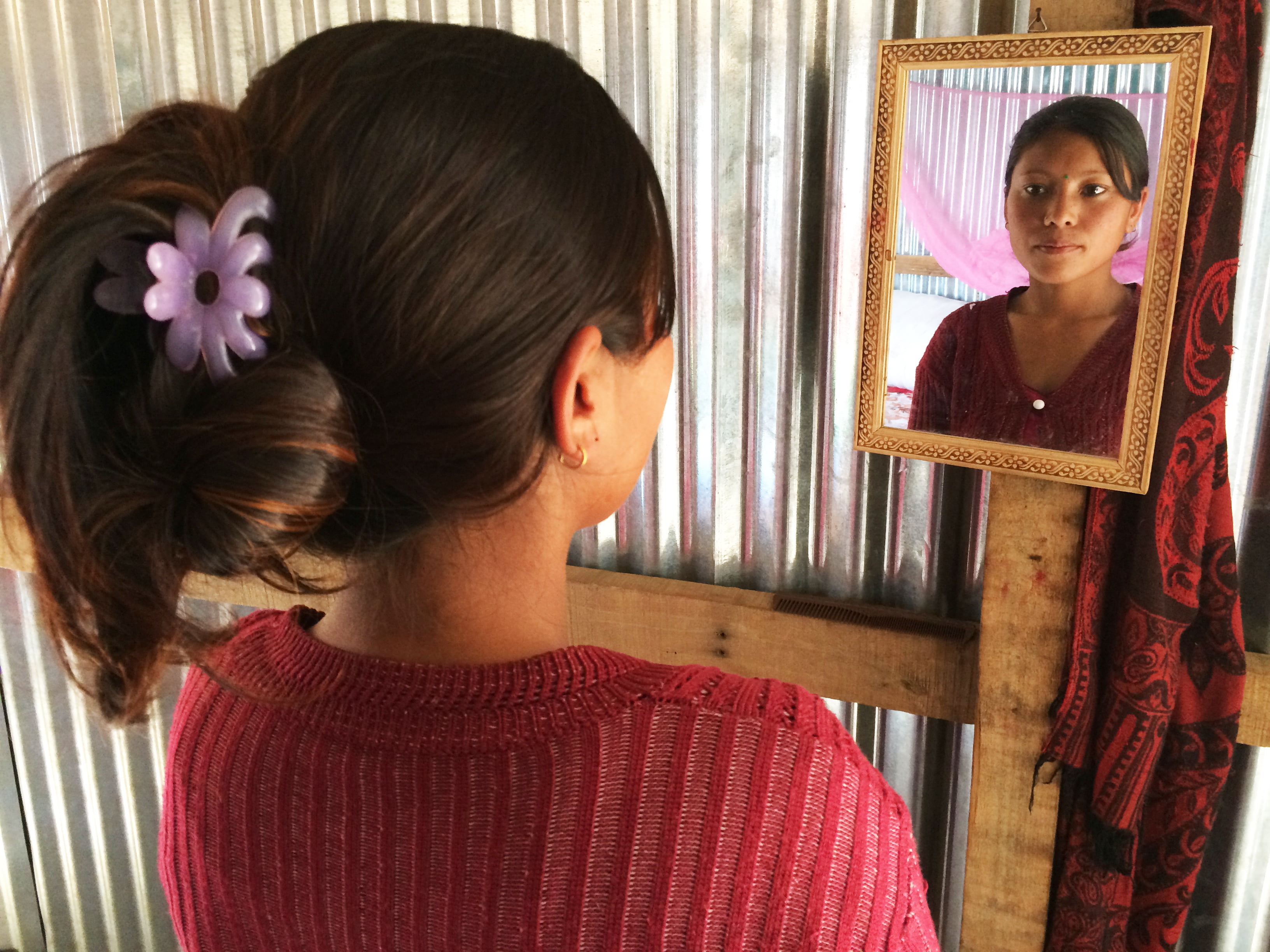In a hilltop village in Nagarkot, Nepal, 24-year-old Prapti Tamang looks at the scattered remains of her old home – just piles of rocks and dirt.
One year ago, when a devastating 7.8 magnitude earthquake shook Nepal, Tamang’s house collapsed in minutes. She was living there alone with her five-year-old son, since her husband works overseas in Qatar and sends money home.
Across hard-hit regions in Nepal, many women face a similar situation. With high unemployment rates in the country, more than 2 million Nepalis work abroad, and most of these overseas workers are men. In Tamang’s village alone, half the women are living on their own, while their husbands try to support their families with jobs in the Middle East and India.
With many of the men away, women have played a major role in Nepal’s recovery.

“It’s very difficult for me without my husband,” she says. “It’s been hard to console my son, who lives in fear of another earthquake.” On top of single-handedly raising her child, she had to plan out how to re-build, find food and clean water, try to access relief and reconstruction funds, and continue sending her son to school.
After the disaster, which killed more than 9,000 people and destroyed more than 600,000 homes in Nepal, Tamang and the others in her village moved to the local temple grounds and planned what to do next. She couldn’t wait for assistance from the government, and it would be another year before her husband could return home, so she took matters into her own hands.
“It’s my core responsibility to take care of things,” she says. While caring for her son, who was sick with a fever at the time, she brought her extended family together to build a small, one-room shack made of tin sheets. They constructed this makeshift shelter next to the rubble of her former home.
Her shack is neat and organized, with a narrow wooden shelf lined with spices and cooking oils next to her gas stove. Though the earthquake took her home, Tamang didn’t lose her sense of style, and colorful flower print sheets decorate her small bed in the corner.
But, life alone in this flimsy shack can be extremely nerve-wracking, especially at night. “The women in this village are very scared,” Tamang says. She feels insecure here because anyone can enter or break down the weak door.

Patriarchy is Slowing Down Reconstruction
On top of these difficulties, many local villages and municipalities have made it hard for women without husbands to access funds that Nepal’s government is slowly starting to distribute.
“Women who are living apart from their husbands, or those who are separated or divorced are facing big problems,” says Ratna Bajracharya with the Nepal-based NGO Justice for All.
Earthquake victims can only receive reconstruction funds by showing government-issued identification cards. However, local officials in certain areas have not issued these ID cards to women who do not have a husband.
“These are not the national government rules, but the practice at the local level,” Bajracharya says. “Those who are making these decisions are not providing these benefits to women.”
Nepal’s government has offered a maximum of $1,900 in reconstruction funds to families who lost their homes. Bajracharya says victims have to present a landowner certificate, among other documents, to access this money.
“In almost all cases, this landowner certificate is issued in the name of the husband, father, or brother. So, if a woman’s husband is overseas, and the certificate is not in her name, then she’ll be in a deep problem.”
However, the spokesperson of the government agency tasked with reconstruction in Nepal says they’ve adjusted policies to make it easier for women to obtain these funds.
“We have taken this very seriously and incorporated it into our guidelines,” says Ram Prasad Thapaliya of Nepal’s National Reconstruction Authority. “Women will not be excluded,” he continues.
Still, it’s often up to local officials in remote village to decide how to proceed. “The authorities at the local level may bypass the rules and regulations, since they have a highly patriarchal mindset,” Bajracharya from Justice for All says.
Back in Prapti Tamang’s village dotted with tin shacks, the women have little hope in rebuilding anytime soon.
Tamang says her husband’s earnings from his factory job are barely enough to make ends meet. Construction costs have risen dramatically since they built their previous home several years ago. So, she’s trying to earn money too, by doing agricultural labor, and often walks long distances to get to fields where she can work.
“I want to build a new house, but it might take ten to fifteen years,” she says, as she thinks about the difficulty of saving up more than $10,000 for a new home. “We will work very hard,” she adds.
Tamang looks forward to her husband’s visit home soon. It will be his first trip back in three years. “It will be very painful for him to see our house gone,” she says.
Sonia Narang reported from Nepal with support from the South Asian Journalists Association.
